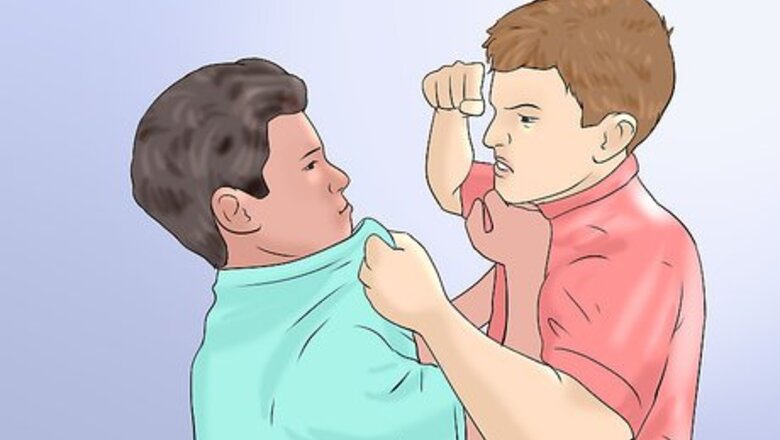
views
Coping in the Moment
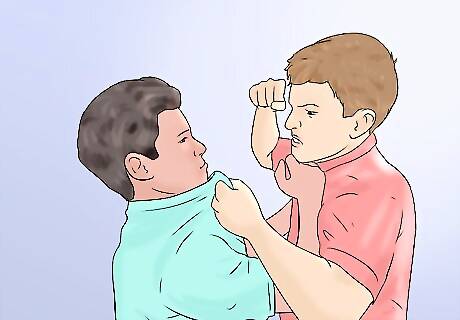
Identify when a behavior poses a threat. Some behaviors are disruptive, but not dangerous. A student may, for example, talk during class or refuse to participate. These behaviors can be dealt with more gently than dangerous behaviors. Dangerous behaviors should be dealt with directly and immediately. If a student is hurting another student or themselves, intervene immediately. If a student is making a threat, intervene. Even if a student is unlikely to follow through with a threat, it is better to be safe than sorry.
Start with small gestures to interrupt problematic behavior. Start with small gestures, since these will often stop disruptive behavior. If a student is talking during class, for example, start by simply standing next to their desk. Proximity will often stop the disruptive behavior. If that doesn't work, escalate your gestures accordingly. If standing by the student's desk doesn't work, try tapping on their desk or table. If that doesn't work, then try asking them to stop talking. Always try to address a behavioral issue without drawing too much attention when possible. Embarrassing them or calling them out in front of the class may make them angry and more likely to act out.
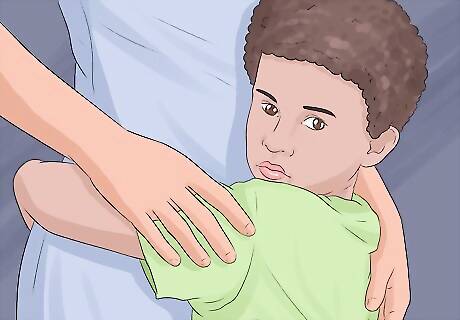
Separate a student from the rest of the class. If a student is becoming dangerous, you may need to separate him or her for the safety of others. If a student is physically lashing out, you need to keep the other students safe. It's best to have another adult escort your students out of the classroom. This may be easier than removing the violent student. If you have a teaching assistant, have him or her take other students to a safe area. You can also move the violent student to the hallway and escort him or her to the principal's office, the nurses's office, or the guidance counselor's office. Make sure someone can supervise your class as you do so.
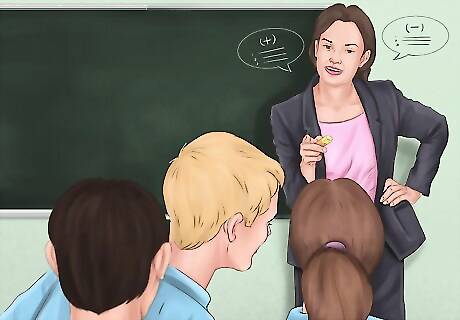
Distract a disruptive student. You may be able to prevent an angry student from becoming violent via distraction. Students, especially younger or older students, may not know how to appropriately deal with emotion. Distracting them from their anger may prevent an outburst. Acknowledge the student is feeling mad, while talking to him or her softly. For example, "James, I understand you're upset that Jane took the toy you wanted." Then, try to change the subject. Distract the student by directing his or her interests elsewhere. For example, "James, you like to paint, right? Maybe you could play with the fingerprints with Mason while you let Jane have a turn with the Legos."
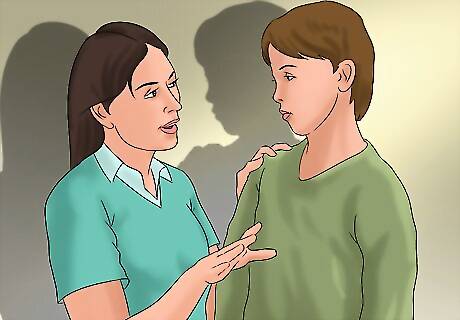
Remind the student of classroom rules. When a student acts out, immediately refer him or her to the rules. You want to make sure the student understands the rules in your classroom will be enforced. If you don't already, have a list of basic classroom rules pinned up somewhere on your wall. This way, you will have something to refer to right there when a student acts out. As soon as a behavior occurs, remind the student of the rules. For example, "Mason, remember rule number four? You're not supposed to talk out of turn."
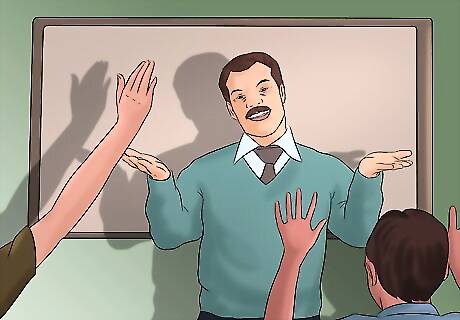
Ignore the behavior if possible. Students often act out for attention. It may be a good idea to simply ignore problem behaviors if they're not dangerous. Try not to react if a student does something like doodle during a lecture, talk out of turn, or other behaviors that can easily be ignored. A student may learn to behave better if he or she is not getting attention for acting out. However, never ignore dangerous behaviors. If a student is doing something that could hurt himself or herself, or another student, it needs to be addressed right away.
Offer the student a choice. Giving your student a choice can help calm them down and redirect their attention. Provide them with a choice that will lead to your intended result, but that gives them the option to take ownership of their actions. This may make them feel more obligated to comply. If, for example, a student is talking too much to a friend sitting next to them, you can tell them that they have the option to move to a seat that will be less distraction, or you can pick a new seat for them.
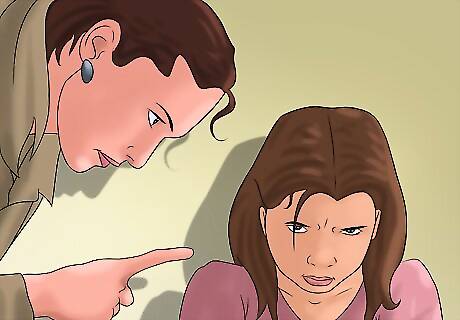
Make the consequences clear. A student should understand what will happen if he or she continues a problem behavior. You want to state the consequences while the student is acting out. If he or she continues to act out, reinforce the consequences. For example, say something like, "If you don't do your in-class activity now, you will have to do it during free period." This may cause the student to stop the problem behavior and follow the rules. However, not all students will respond to consequences. Some students may continue to act out. If this happens, make sure you enforce the punishment. Students need to make a connection between negative actions and consequences.
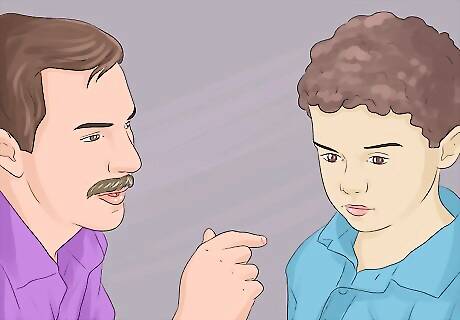
Have a student work toward an apology. A sincere apology can help repair any conflict caused by a negative behavior. After a student acts out, have them and any other involved students step aside to start a conversation. Encourage them to work toward the root of the issue and talk openly about how to avoid similar issues in the future. This can help direct students to a meaningful and sincere apology. Who the student apologizes to depends on the behavior. If a student hit another student, for example, he or she should apologize to that student. If a student disrupted class, he or she should apologize to the class. If a student disrespected you, you should require him or her to offer you an apology.

Use physical restraint only when necessary. Physical restraint can be risky. You do not want to accidentally harm a student. You should only use physical restraint if a student is hurting another student or his or herself. Always use the least amount of force possible when using physical restraint.
Reducing Problem Behaviors

Record problem behaviors. Recording behaviors as they occur can help you see a pattern. You can see when a student is most likely to misbehave. You can identify any triggers that may be causing the difficult behavior. Keep a notebook to record difficult behaviors. Note all the details of the behavior, when it occurred, and any circumstances surrounding the incident. Look for patterns. Does the student seem to act out at a particular time during the day? Maybe a student acts out just before recess. This could be because the student is anxious to get out of the classroom. This student may need help regulating his or her energy.

Supervise students more closely when they're likely to lash out. Once you know when problem behaviors occur, increase supervision during this time. This can help you eliminate behavior issues. You can monitor your class more closely during certain times of the day. Group work just before recess, for example, may require additional supervision. If you have any classroom assistants, ask for their help here. Have them monitor students closely when they're likely to act out.

Reinforce positive behaviors. Students often respond better to positive reinforcement than negative reinforcement. Instead of always scolding students for poor behavior, work on praising students for positive behavior. Always praise students for following rules. Do so immediately after the good behaviors occur. A lot of students crave praise and approval from their teacher. Students with behavior issues may be more likely to change if they see they gain favor by following rules. For example, you can say something like, "Harper, I really like how you waited for me to finish explaining before asking a question. It makes the classroom run smoother when everyone takes turns talking." EXPERT TIP Joseph Meyer Joseph Meyer Math Teacher Joseph Meyer is a High School Math Teacher based in Pittsburgh, Pennsylvania. He is an educator at City Charter High School, where he has been teaching for over 7 years. Joseph is also the founder of Sandbox Math, an online learning community dedicated to helping students succeed in Algebra. His site is set apart by its focus on fostering genuine comprehension through step-by-step understanding (instead of just getting the correct final answer), enabling learners to identify and overcome misunderstandings and confidently take on any test they face. He received his MA in Physics from Case Western Reserve University and his BA in Physics from Baldwin Wallace University. Joseph Meyer Joseph Meyer Math Teacher Take satisfaction in seeing your students thrive. Celebrate your students' "aha!" moments and enjoy witnessing their progress. Appreciate when they buy into the collaborative learning environment you've been fostering. These rewarding moments are the fuel that will uphold your passion for teaching.
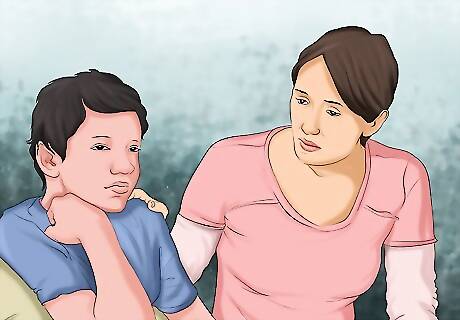
Identify any underlying problems. More often than not, students are acting out for a reason. You want to make sure you identify underlying problems so they can be dealt with appropriately. A student who is behaving poorly may have a health problem, an issue at home, a mental health issue, or may be acting out due to academic difficulties. If a student's behavior does not improve with regular intervention, there may be something else going on. You may have to have a sit down talk with a student whose behavior is not improving. Ask him or her open-ended questions, like, "Is there a reason you're having trouble concentrating." This gives the student the opportunity to open up on what is preventing him or her from achieving academic success.
Taking Preventative Measures
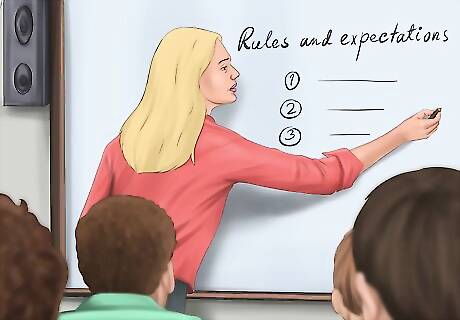
Make your classroom rules clear. This can help encourage good behavior from the first day of class. You do not want to start off the school year with your students confused about appropriate behavior. Go over your rules on the first day of class. Take time to explain everything clearly. Give students a chance to ask questions later on. Hand out a syllabus that includes a list of classroom rules. This way, students can review the rules on their own.
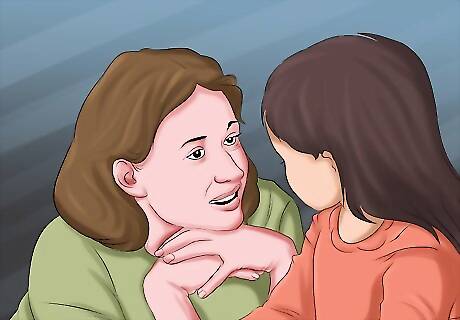
Give students one-on-one attention. If an atmosphere is depersonalized, students may feel more comfortable engaging in problem behaviors. Work on making sure every students feels they have a one-on-one relationship with you. This will make students more likely to respect you and follow your rules. Make sure you know all your students' names. You can use a photo roster if necessary until you have all the names down. Make small talk with students as they come into your classroom. Ask students about their weekends or their plans for after school. Have office hours. Encourage students to come in and talk if they need help with a homework assignment or want to talk over another issue.
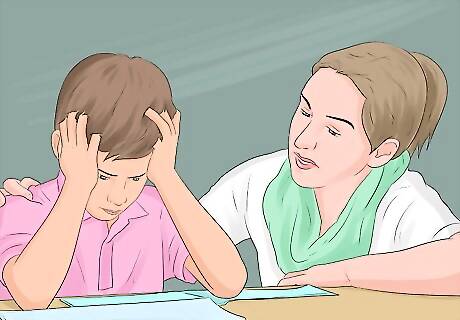
Keep communication open. Students often act out when they're confused or angry. Fostering a system of open communication allows students to tell you about their issues directly. Be kind to all your students. Greet them as they enter the classroom and say goodbye at the end of the day. Be courteous and kind to your students. If your students feel comfortable with you, they may be more comfortable opening up about issues they're having.

Understand a child may express needs through problem behaviors. Try not to get angry or frustrated by troublesome behaviors. Often, a student engaging in problem behaviors is struggling with something. A student may be struggling at home, or unable to keep up academically. Students who act out are rarely trying to be malicious, so stay empathetic. You want to make sure students get the attention they need to thrive.




















Comments
0 comment